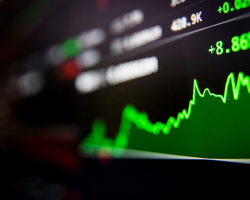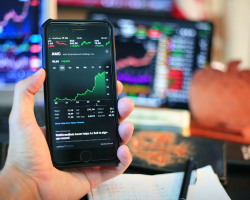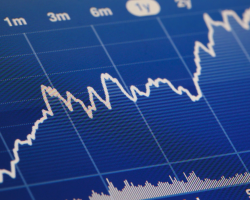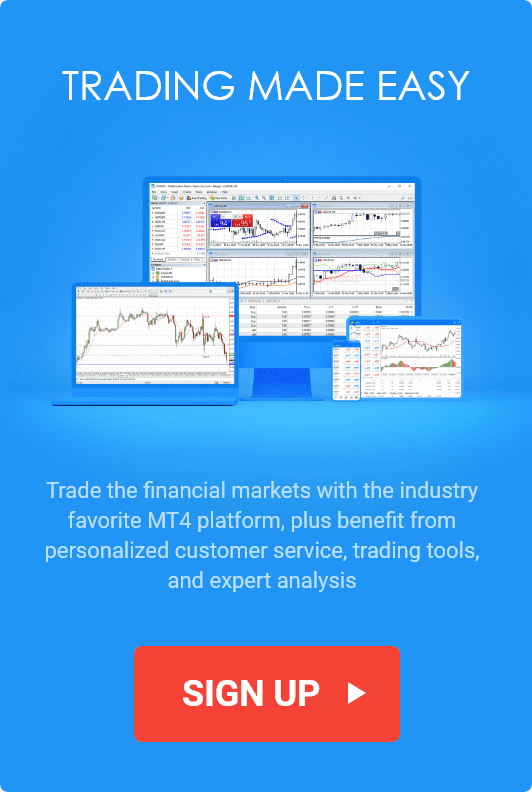Effective Ways to Assess and Control Risk Exposure in Your Portfolio

Are you aware that nearly 80% of new traders face significant losses within their first few months of trading? One of the primary reasons is inadequate risk management. This statistic underscores the critical importance of understanding and managing risk exposure in trading. Risk exposure refers to the potential losses that a trader may face due to changes in the market, and it’s a core concept in trading risk management. Whether you’re trading stocks, forex, or commodities, understanding your risk exposure can make the difference between consistent growth and substantial losses.
In essence, risk exposure in trading measures how vulnerable your investments are to fluctuations in the market. By understanding this, traders can strategically manage potential losses, enhance profitability, and safeguard their portfolios against unexpected market shifts. From setting appropriate Stop Loss levels to diversifying portfolios, risk exposure management allows traders to stay on top of their investments, making it an essential skill for long-term success.
What Is Risk Exposure?
Risk exposure is the degree to which an investment or trading position is susceptible to potential losses due to factors such as market volatility, economic events, or asset-specific risks. In other words, it’s the measurement of how much risk a trader or investor is exposed to in any given position. For example, if you hold a substantial amount of a single asset, like a specific stock or currency pair, your risk exposure is directly tied to the price movements of that asset.
In trading, risk exposure comes in various forms, including market risk (the risk of price changes in the overall market), credit risk (the risk that a counterparty won’t fulfill their obligations), and liquidity risk (the risk of being unable to quickly exit a position without significant price impact). Each type of risk has its own impact on your portfolio, which is why understanding the nuances of your exposure is crucial.
Why is understanding one’s risk exposure so vital? For both beginners and experienced traders, knowing your risk exposure allows for better decision-making and more strategic positioning. Beginners can avoid common pitfalls, such as over-leveraging or putting all their capital into a single trade, while experienced traders can fine-tune their strategies based on their risk tolerance and market conditions. In the volatile world of trading, awareness of risk exposure isn’t just beneficial - it’s essential for long-term profitability and resilience in the market.
Also read: Decoding Risk Appetite in Forex Trading
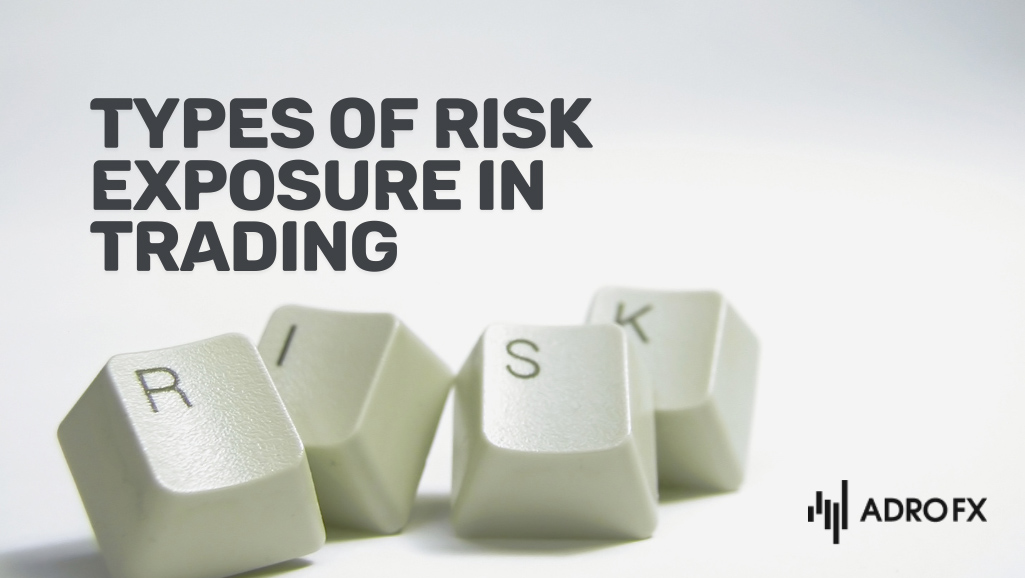
Types of Risk Exposure in Trading
In trading, understanding the various types of risk exposure is essential for effective risk management. Traders encounter multiple forms of financial risk, each with unique implications for their positions and portfolios. Here’s an overview of the primary types of market risk exposure that every trader should consider:
- Market Risk
Market risk is the risk of losses due to fluctuations in asset prices. This type of risk exposure is inherent in trading, as prices of stocks, forex pairs, commodities, and other assets can be highly volatile. Even a slight shift in market conditions can significantly impact a trader’s position. For instance, if the stock market experiences a sudden downturn, positions heavily invested in stocks may see considerable losses.
- Credit Risk
Credit risk arises when a counterparty fails to fulfill their financial obligations. This risk is especially relevant in derivatives and leveraged trading, where brokers or counterparties may default on their agreements. In forex trading, for example, credit risk could materialize if a broker becomes insolvent, impacting traders’ ability to access their funds or execute trades.
- Liquidity Risk
Liquidity risk is the difficulty of exiting a position without influencing the asset’s price. In highly liquid markets, such as major currency pairs in forex, liquidity risk is minimal. However, for less liquid assets or during times of market stress, liquidity risk becomes a concern as traders may struggle to sell without significantly impacting the price, potentially leading to unfavorable outcomes.
- Operational Risk
Operational risk stems from failures in internal processes, technology, or human error. This could include issues with trading platforms, data errors, or even cyberattacks. For instance, a platform outage during a high-volatility event could prevent a trader from executing an essential transaction, resulting in financial losses.
- Regulatory Risk
Regulatory risk involves potential losses due to changes in laws, regulations, or compliance requirements. Markets are subject to various regulations, and sudden regulatory changes can disrupt trading strategies or even restrict access to certain markets or assets. Traders need to stay updated on regulatory developments to avoid unexpected impacts on their positions.
How to Measure and Assess Risk Exposure
Effective risk management begins with assessing risk exposure accurately. For traders, this means using a combination of measuring risk in trading tools and personal strategies to understand the full scope of their risk. Here’s a breakdown of some commonly used approaches:
- Risk Assessment Tools
Several tools help traders quantify and analyze risk exposure. Value at Risk (VaR) is a widely used metric that estimates the maximum potential loss over a specific time frame with a given confidence level. Beta is another measure, often used in stocks, that shows how a particular asset moves in relation to the broader market. Scenario analysis and stress testing are also valuable, allowing traders to simulate adverse conditions and evaluate the potential impact on their portfolios.
- Quantitative vs. Qualitative Assessment
While quantitative tools provide numerical insights, qualitative assessment is also crucial. Quantitative analysis may indicate potential losses, but qualitative factors - like changes in economic conditions, political developments, or industry trends - can also affect a trader’s exposure. Both approaches provide a more holistic risk profile, enabling traders to make informed decisions.
- Setting Risk Tolerance Levels
Understanding and setting personal risk tolerance levels is essential for managing exposure. Traders should define their risk limits based on their capital, trading goals, and market experience. Setting these limits allows traders to take on risk that aligns with their financial goals without exceeding their comfort zone. By establishing clear boundaries, traders can approach the market with confidence and avoid impulsive decisions that may lead to excessive losses.
Through a combination of these tools and strategies, traders can measure and manage their risk exposure effectively, enhancing their resilience in the face of market uncertainties.
Also read: Risk/Reward Ratio Explained: A Trader's Essential Tool for Profitability

Strategies to Manage and Minimize Risk Exposure
Managing risk exposure is crucial for traders who want to protect their capital and enhance their chances of long-term success. Here are some effective risk management strategies that traders can use to minimize potential losses and safeguard their investments:
- Diversification
Diversification involves spreading investments across various asset classes or sectors to reduce the impact of any single asset's poor performance on the overall portfolio. By diversifying, traders can balance their exposure to risk across different markets, including stocks, forex, commodities, and bonds. For instance, if one sector experiences a downturn, other investments might remain stable or even increase in value, offsetting potential losses. This approach helps create a more stable portfolio and mitigates the risk associated with market-specific fluctuations.
- Hedging
Hedging is another valuable strategy to manage risk by using instruments like options, futures, or contracts that protect against adverse price movements. For example, if a trader holds a large stock position, they might purchase put options as insurance against potential losses. In forex trading, a trader could hedge currency risk by taking opposite positions in correlated pairs. While hedging involves costs, it’s an effective way to offset potential losses and reduce exposure, particularly in volatile markets.
- Stop Loss and Take Profit Orders
Stop Loss and Take Profit orders are essential tools for managing risk and protecting capital. A Stop Loss order allows traders to set a predetermined price at which their position will be closed automatically if the market moves against them. This helps prevent excessive losses. Take Profit orders, on the other hand, allow traders to lock in profits by closing a position once it reaches a certain target price. By using these orders, traders can manage their risk proactively and avoid emotional decisions during market fluctuations.
- Leverage Control
Leverage can amplify both profits and losses, making it essential for traders to manage leverage responsibly. High leverage increases exposure to market risk and can lead to significant losses if the market moves unfavorably. Traders should assess their risk tolerance and use leverage prudently, adjusting it based on market conditions and their capital. By controlling leverage, traders can limit their exposure and reduce the chances of overextending their resources.
- Position Sizing
Proper position sizing is critical for effective risk management. This means determining the amount of capital allocated to each trade relative to the trader’s account size and risk tolerance. By sizing positions carefully, traders can avoid putting too much of their capital at risk on any single trade. A commonly recommended rule is the 1-2% rule, where traders risk no more than 1-2% of their total capital on a single position. Position sizing enables traders to stay within their risk limits and manage exposure effectively.
Common Mistakes in Managing Risk Exposure
Traders often face challenges in managing risk effectively, and even experienced traders can make mistakes that increase their exposure to potential losses. One common pitfall is over-leveraging, where the appeal of amplified gains leads traders to take on excessive leverage, which can quickly backfire with substantial losses. This approach often results in margin calls or forced liquidation of positions, significantly impacting a trader’s capital. Managing leverage within reasonable limits aligned with personal risk tolerance can help avoid these outcomes.
Another frequent error is ignoring Stop Loss levels. Without setting or adhering to Stop Loss orders, traders are exposed to potentially large losses from adverse market movements. Many traders fall into the trap of “hoping” the market will recover, which can lead to even greater losses. Consistently using Stop Loss orders can prevent this type of uncontrolled exposure and protect one’s capital.
Failing to diversify also heightens risk exposure, as concentrating investments in a single asset or sector leaves a portfolio vulnerable to market downturns. Without diversification, a poor-performing asset can impact the entire portfolio. By spreading investments across different assets, traders can create a balanced risk profile, minimizing the impact of any single event on their overall portfolio.
Emotional decision-making is another common risk management mistake, as emotions like fear and greed often override logical thinking. Impulsive choices, such as chasing losses or making risky trades, can jeopardize a trader’s strategy and increase risk exposure. A disciplined, rule-based approach helps traders make rational decisions and avoid these pitfalls.
Also read: Ignoring Risk Management: The Fastest Way to Lose Your Investment | Essential Strategies for Success
The Role of Technology in Risk Exposure Management
In today’s digital trading environment, technology plays a significant role in helping traders manage and reduce trading risk exposure. Modern platforms, like AdroFx, provide built-in features such as Stop Loss and Take Profit orders, which streamline risk management. Automated tools can execute risk strategies based on predefined conditions, reducing the chance of human error. Additionally, real-time analytics provide traders with insights into market conditions, enabling proactive risk assessment and adjustment. Embracing these technological advances can significantly enhance a trader’s ability to manage risk.
Conclusion
Understanding and managing risk exposure is essential for achieving long-term trading success. Effective risk management strategies, including diversification, leverage control, and the use of Stop Loss orders, empower traders to protect their capital and enhance their profitability. By avoiding common mistakes, leveraging technology, and consistently assessing exposure, traders can build a resilient trading approach.
In the ever-changing world of trading, mastering risk exposure is key to navigating uncertainties and staying on track toward one’s financial goals.
To take your risk management skills to the next level, explore the resources and tools available with AdroFx, and start your journey towards a safer and more effective trading experience.
About AdroFx
Established in 2018, AdroFx is known for its high technology and its ability to deliver high-quality brokerage services in more than 200 countries around the world. AdroFx makes every effort to keep its customers satisfied and to meet all the trading needs of any trader. With the five types of trading accounts, we have all it takes to fit any traders` needs and styles. The company provides access to 115+ trading instruments, including currencies, metals, stocks, and cryptocurrencies, which make it possible to make the most out of trading on the financial markets. Considering all the above, AdroFx is the perfect variant for anyone who doesn't settle for less than the best.

